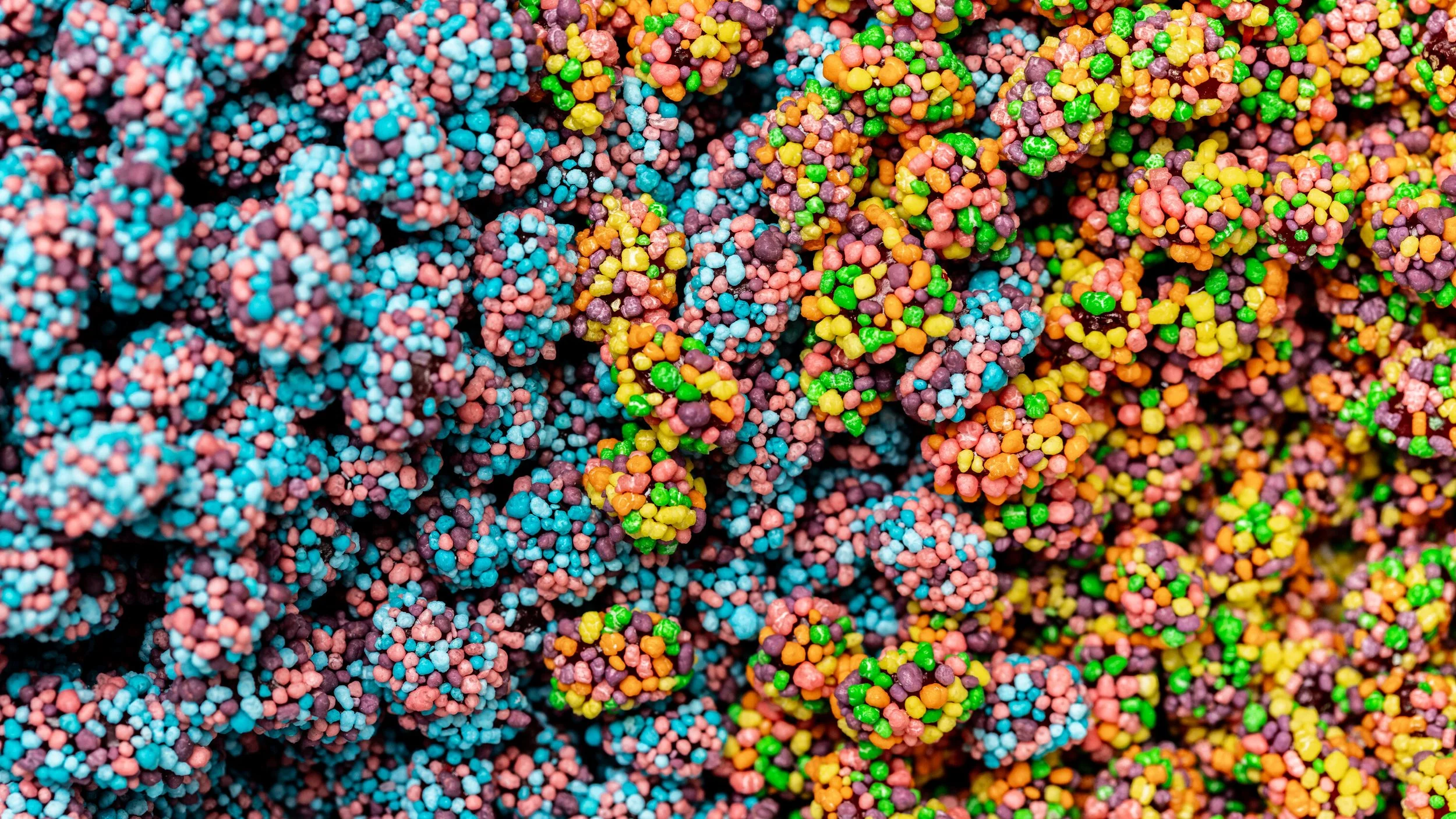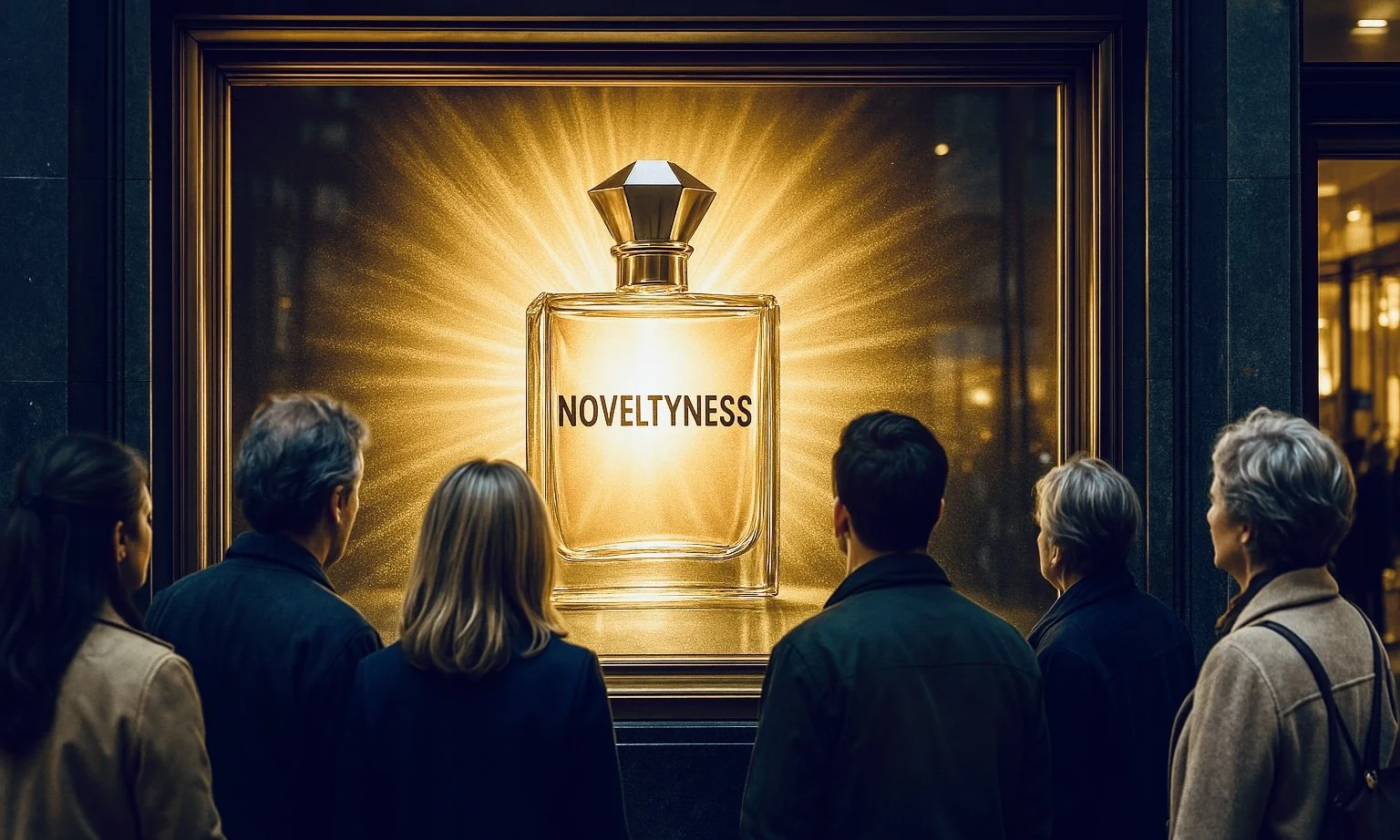All buzz, no brand: Why we love new shit and why it’s not a good idea
In my 20-ish years in the brand, marketing, and advertising industry, I’ve been lucky enough to work with some excellent people at some excellent places. I’ve seen, learned, and experienced a lot – what works, what doesn’t. But there’s one thing that I’ve always wrestled with. A thing that can be leveraged for personal advantage, but also a thing that can leave a brand utterly short-changed down the track, and has the potential to negatively impact not just our industry, but society too.
So what’s the thing? Noveltyness™ – a blind proclivity to reaching for the new, fresh, or different, regardless of whether it’s better, useful, or meaningful. The Noveltyness™ bias is deeply rooted in evolution, novelty-seeking behaviour is critical for survival, with our dopamine system evolving to reward exploration. It’s why we always choose the special in restaurants, why our kids are drawn to plastic crap, and why marketers have given us weird-flavoured Kit-Kats, Barbie beefburgers, caviar Twisties, glow-in-the-dark cans of whisky, and NFT tennis ball artworks.
None of these activities are bad in their own right, but attention-grabbing tactics that are here today, gone tomorrow are on the rise and this isn’t good. Arguably a sign of increasing shitness – technical term – for the erosion of experience, standards, and just general common sense, within the marketing industry.
I experienced the allure of Noveltyness™ first hand when I worked in advertising. All that the agency powers-that-be wanted (really, really, really wanted) was a “never-been-done-before” idea – a promotion or activation that demonstrated their zeitgeistyness. Something they could PR as a ‘first’; something an award show would get all hot and bothered about. There was zero consideration for business objectives, brand alignment, or brand relevance.
The good news for marketers and bean counters is that Noveltyness™ sells. People love a gimmick. Blend gimmickry with newness and chuck in some social media influence, and you’ve got a potent sauce indeed. Take Nerds candy in the U.S. In 2018, it had less than $50 million in sales. In 2024, their novelty Halloween variant, Gummy Clusters, sold $800 million – the product hitting the jackpot in 2021 when Kylie Jenner posted about it on Instagram: “obsessed!”.
The thing is, Gummy Clusters didn’t test well, and Nerds didn’t have a lot of faith in the product so they didn’t put a lot of spend behind their promotion. What happened was 99% luck and maybe 1% of good measure. Somehow they landed on their feet – however, you can’t objectively build a brand on a random product innovation and luck. So, yes, Noveltyness™ can be great for a short-term sales spike, winning marketing awards, and boosting careers – but it’s an unpredictable and unreliable tactic for any brand looking to achieve long-term success.
In 2024, the Halloween variant of Gummy Clusters sold $800 million
What about the 4 Ps of Product, Price, Place, and Promotion, Jim? Don’t get me wrong, Noveltyness™ as part of the fourth P is a perfectly valid and valuable tool in the marketer’s playbook. The Messina x Drumstick partnership from a few years ago is a great example of a promotional tactic working well – Drumstick’s long-standing presence in the Australian ice cream market, combined with Gelato Messina’s reputation for premium, artisanal gelato, created a product that appealed to a wide range of consumers. But if we continue to rely solely on Noveltyness™ as our primary selling strategy, we’re already on the hamster wheel of marketing madness – always moving but not going anywhere.
Liquid Death, the U.S.-based water brand known for its edgy marketing and beer-like cans, is, to me, a classic example of peak Noveltyness™. Everyone was going nuts for it – extolling its marketing genius for its zany comms and heavy metal-inspired branding. So when it expanded into the UK a few years ago, the fervour continued. But, after less than two years, and with up to a 10x price premium compared to other waters, the Noveltyness™ of water in a fancy can wore thin pretty quickly – and Liquid Death pulled out of the UK.
Noveltyness™ is bad for three reasons:
Undermines Brand Equity
A strong FMCG brand should be built on recognition, consistency, and trust, not just on what’s new or what’s trending. When brands churn out new packaging, new flavours, and limited-time offers, they dilute their identity. They also train consumers to be fickle, to chase gimmicks rather than develop a real connection to the brand.
Creates False Success
Short-term promotional tactics, price discounts, two-for-one deals, limited-time offers, spike sales but distort reality. They don’t build real demand, just shift purchases earlier or encourage stockpiling. Noveltyness™ tactics reduce profitability – consumers expect regular discounts, thus, full-price sales decline, and perceived value is eroded.
Always doing, never thinking
When brands prioritise constant Noveltyness™ over strategic thinking, they fall into a cycle of endlessly iterating on what “worked last time”. This approach burns through staff and resources. The pressure of constantly creating something new or finding the next, means teams are always on the clock without time to reflect on effectiveness or invest in strategic planning.
The most successful brands in history – Apple, Nike, Coca-Cola et al – all manage to balance innovation with brand consistency and product excellence. They don’t reinvent their brand every few months, or rely on a procession of gimmicky promos – they evolve strategically. Yo, Jim, haven’t you heard about Nike and their current brand woes?
Great point, well made. Nike’s recent strategic pivot underscores the pitfalls of prioritising Noveltyness™ over core brand values. Under former CEO John Donahoe, Nike emphasised digital transformation and direct-to-consumer models, investing heavily in virtual ventures and the metaverse – you could not get more Noveltynessy. Smaller competitors like Hoka and On Running capitalised on this by focusing on product development and grassroots brand marketing. Nike appointed veteran Elliott Hill as their new CEO with a clear brief to return the brand to its foundational principles.
As an industry, we should be worried. There’s a reason we’re seeing more and more Noveltyness™, and it’s rooted in societal change. All over the world, we’re seeing people tear things up – or down, almost for the sake of it. For those familiar with the Strauss-Howe Generational Theory which outlines a repeating cycle of societal moods and historical events over roughly 80–100 years, you’ll note that we’re moving from the third phase, ‘The Unraveling’ (Decline in Trust & Rising Individualism) into the fourth phase ‘The Crisis’ (Disruption & Rebirth), characterised by a period of large-scale crises (wars, economic collapse, pandemics) that redefine society. The good news is that the next phase is ‘The High’ (Recovery & Stability), however, I fear we’re a good few years off that.
The point is, however you explain or experience our current context, there is a great disdain for the past, a devaluation of established wisdom, and a lack of respect for experience. Across the spectrum, we’re seeing a weakening of institutions, social fragmentation, and division. And marketing and advertising are not immune. Marketers and brands are less interested in long-term branding and marketing excellence, because, well, the world is pretty reactive, people are hard to understand, and the category is difficult to navigate.
Human beings are hard-wired to seek out novelty
We’re also seeing the effects of the ultimate in Noveltyness™, social media and AI, impacting not just how we communicate with consumers, but how marketing functions, and how individuals within the industry behave. As experience gets cost-cut out of the industry, ‘old ways’ are being dismissed, and reactive strategies more readily adopted. Without experience and leadership, AI and social media have transitioned from ‘channel’ and ‘optimising technology’, to becoming marketing’s dominant influence and knowledge source.
Like on social media, we’re seeing more individuals and brands saying and doing what they like, with less personal accountability or consideration for future consequences. The integrity of brand and marketing is at a low ebb. The madness of all of this is that we are consciously, passively, allowing this to happen. Instead of investing in long-term equity, we’re chasing fleeting trends, prioritising engagement metrics over meaningful connections, and mistaking visibility for value.
Brand first, context second
Instead of chasing cultural moments, brands should filter trends through their brand lens. Not every viral moment is relevant, and not every short-term fad deserves a product launch. The most successful brands know who they are and find ways to make trends work for them, rather than bending to whatever is popular.
Engagement beyond metrics
Social media has trained our brains to chase likes, shares, and virality, but engagement is about creating meaningful consumer relationships, not just visibility. Instead of focusing solely on content that ‘performs well,’ brands should prioritise content that reinforces brand values, educates consumers, or builds emotional connections.
Innovate with purpose, not just for hype
FMCG brands should focus on product innovation that solves real consumer needs, rather than launching gimmicky new flavours or limited-time offers just for attention. Does this add long-term value to the brand, or is it just a short-term stunt?
As the fastest and most furious of marketing streams, FMCG can reach its audience and communicate value without having to treat marketing like a TikTok challenge. The FMCG brands that will win aren’t the ones dripping in Noveltyness™ or constantly reinventing themselves, they’ll be the ones that stay true to who they are and evolve strategically.
More brand. Less buzz.


